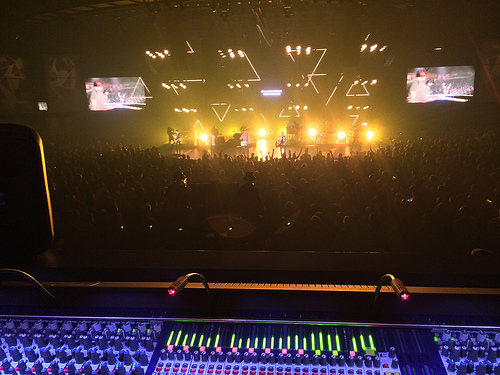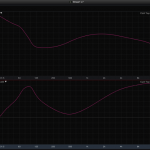
Fitting & Sitting
I’ve got some mixing stuff for you today. I realize some of you are beyond this by now and will read this and say, “Duh.” However, I’ll bet some of you never thought about this before, and for others maybe this’ll help flip a switch on approaching things.
At a basic level of mixing, we want the instruments in our mix to fit together and sit together. When things FIT together, we can hear everything. When they SIT together, it sounds like they’re all playing together as a cohesive unit.
If an instrument is audible for a moment and then gone or at just the right volume one moment and too loud the next, that’s probably a “sitting” problem. If you turn something up and up and up and up, and the only way to hear it is to literally overpower everything else in the mix, you probably have a “fitting” problem. If something sounds great solo’ed, but the minute you toss it into the mix it loses clarity or sounds strange, that’s probably also a “fitting” problem.
So how do you make something “sit” and/or “fit” in the mix?
Well, perhaps it’s better to ask a slightly different questions along the lines of, “Why won’t something “sit” and/or “fit” in the mix?”
I’ve mentioned it before, but there is no recipe for mixing. I believe mixing can be approached in a systematic way, but you have to be careful not to get too regimented or you end up “mixing by numbers” which will bite you sooner or later. In general, we listen, decide what’s going on, and then act appropriately.
So what exactly is going on with our sit and fit issues?
I think it’s actually pretty simple:
- When something doesn’t sit in a mix, we probably have a dynamics issue.
- When something doesn’t fit in a mix, we probably have a frequency/tonal issue.
- Ideally, we want everyone on stage performing with the same dynamics which for the most part will be consistent perceived loudness. Lack of dynamics in music gets a bad rap these days, but the dynamics most people complain about missing aren’t necessarily the same type of dynamics we’re looking for in this case. What we’re interested in here is consistent, even performance levels across the sources in our mix. Everything can rise up and everything can get quiet, but it should all move together. Maybe a better way to say this is things in our mix should ideally have equivalent dynamics.
Let’s look at an example. Vocals are notoriously difficult for new engineers to get sitting right in a mix, and consequently the vocals often get pushed up and over the top karaoke style. Vocals are hard to sit because vocals can be wildly dynamic in levels especially when the vocalist isn’t very experienced. Their volume may track their pitch getting louder with the high notes and softer with the low notes. They might vary volume depending on how long they’re sustaining things with long sustained stuff being louder than shorter bursts of vocal. These wide fluctuations in level make it difficult to sit the vocal amongst the rest of the instrumentation which in a typical rock band-esque setting will, or at least should, be fairly even in dynamics. So, in order to get a vocal to sit in modern music, we often have to compress it to get its dynamics to play with the band.
Now before you go and start compressing everything to here and back, let me clarify something. Getting something to sit isn’t about removing it’s dynamic range; it’s about getting it’s dynamics consistent with the rest of the instrumentation. You don’t, in my opinion, need to squash the dynamic life out of everything especially if you’re working in live sound. In fact, make sure and check that you don’t have a compressor set on stun somewhere because over-compressing an input can keep it from sitting right just as much as no compression might. For example, it is not uncommon for me to have trouble getting pre-recorded tracks to sit right in a live situation because the tracks are often squashed to oblivion relative to the live inputs coming from the stage.
Fitting issues, on the other hand, are often the result of multiple instruments occupying the same real estate within the frequency spectrum. This can result in buildups of those frequencies within the mix along with reduced clarity of one or more of the instruments or even outright masking of instruments. In most cases, the loudest of the bunch wins the war to be heard.
My primary tool for dealing with this, especially in live sound, is EQ. I see a lot of engineers use EQ to get an individual input to sound right or better. I do this, too, and for a long time polishing was my primary application for EQ. However, these days I am equally if not more interested in using EQ to get things fitting together. Now this is one of those things that’s sometimes easier said than explained, but I have a technique and some strategies I often demonstrate in my mixing workshops on how to do this using your ears so I’d suggest checking that out if you’re interested in learning more on this or you can just start experimenting with EQ to discover it on your own.
Panning can be another technique for getting things to fit together, but I hesitate on overusing this in live sound for reasons I think I’ve written about in a previous article or two.
Now, before I wrap this up, remember that above I said sitting and fitting issues are probably dynamics or tonally related. I say probably because there can be other issues at play. For example, if you have multiple instruments all playing the exact same notes, you will probably have a fitting problem and trying to EQ things might not get you very far. In those cases the fitting issue is more of an arrangement issue and needs to be dealt with at the musical level.
Sitting issues for me can sometimes also be space related. For example, when I hear something that’s too dry or too reverberant, to my ears it may not sit properly in the mix and feel out of place.
My advice in approaching these mixing challenges is to start by focusing on fitting things together first so you can hear everything. Once you can hear everything, I think it’s easier to assess what’s not sitting properly. I know it’s very easy to just start compressing things on their own, but you might find once everything is fitting together you don’t need much or any compression to level things. Also, keep in mind this can all be a little bit of a simplification of things because compression can affect tone and tone can affect the way compression works. Everything is interrelated to a certain extent when we start manipulating sound, however, I still think you might go farther faster by focusing on fitting things together first.


 Next Post
Next Post



Glad you mentioned arrangements. That’s something that a lot of people try to fix with EQ or plugins, when what really needs to happen is a conversation. Good thoughts, Dave.
Hey Dave,
Great write up. I 2nd your commentary about “canned” backing tracks. I had an issue this past weekend where the accompanying CD in combination with the vocalist’s dynamics were just ALL OVER the place. I ended up riding both faders like as if we were on a marathon bull ride in an attempt to get them to sit together.
Keep sharing great info & tips.